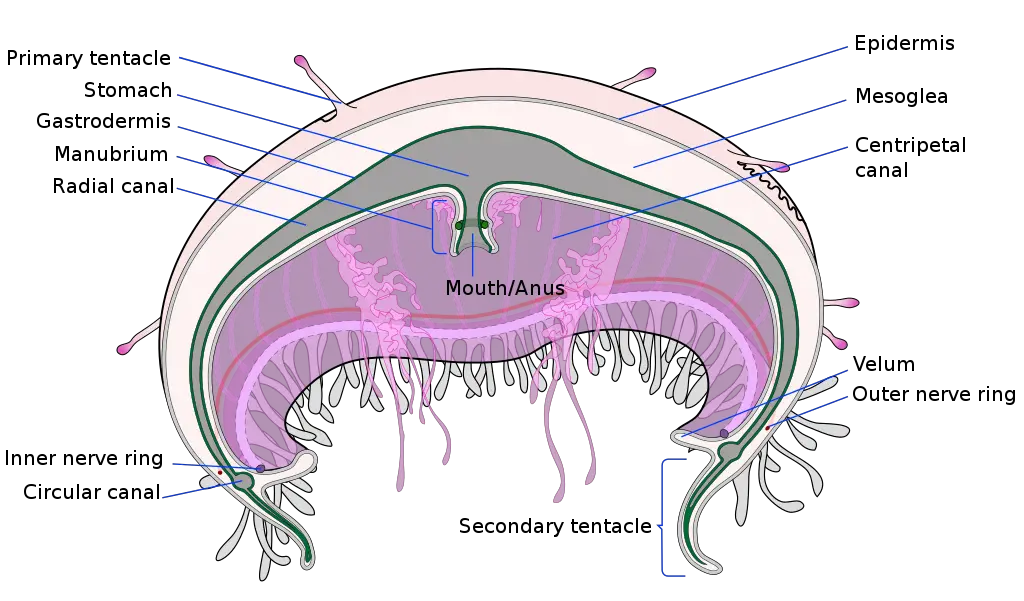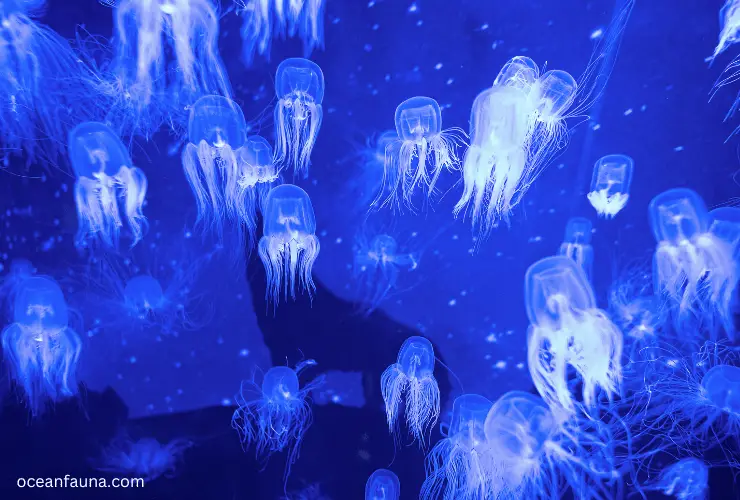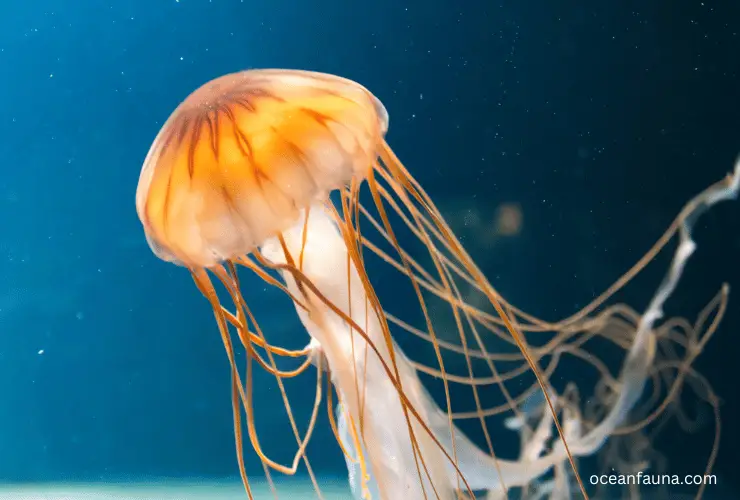Unlike humans and other vertebrates, jellyfish don’t possess the typical hearts that require pumping. In fact, they lack many of the characteristics of traditional animals.
These include a centralized nervous system and complex organs. Nevertheless, they have developed a unique and effective method for transporting nutrients and oxygen throughout their bodies.
Jellyfish are fascinating creatures known for their unique appearance and mesmerizing movements. Their bodies comprise three layers:
- Epidermis- the outer layer
- Mesoglea- the middle layer made of a thick, elastic, jelly-like substance
- Gastrodermis- the inner layer
But how do they manage to circulate oxygen without a heart? In this blog, we will explore the anatomy of jellyfish and the unique ways in which they pump nutrients and oxygen throughout their bodies.
Do Jellyfish Have Hearts?
Jellyfish do not have hearts as humans do, but they do have a nerve net that works like an artificial heart and circulatory system. This nerve net is located across the sub-umbrella muscle and is constructed of widespread inter-neuronal communication.

When the motor nerve net is stimulated, an activation wave spreads over the entire umbrella. And instead of blood, jellyfish use seawater to transport nutrients and oxygen throughout their bodies.
Jellyfish are not the only organisms without a heart. Starfish, corals, sponges, and other marine invertebrates do not have hearts either.
Why Don’t Jellyfish Have a Heart?

Jellyfish belong to a group of animals called “cnidarians,” which also includes sea anemones and corals. Cnidarians are some of the oldest creatures on our planet and evolved in an environment vastly different from the one we live in today.
When cnidarians first emerged, the ocean had much lower oxygen levels, and life in it was less complex. Therefore, these creatures developed a simple body structure that allowed them to thrive in such an environment.
Jellyfish, for instance, have symmetrical bodies shaped like a sack and lack bones or complex organs. Unlike most animals, they do not possess blood, meaning they don’t need the heart to pump it. Instead, nutrients and waste products can pass in and out of their body through their thin skin.
How Does a Jellyfish Live Without a Heart?
Jellyfish have a unique way of surviving without a heart, as they have adapted to live without a centralized circulatory system. Instead, they have a network of canals and vessels that help transport nutrients and oxygen throughout their bodies.

The process that allows jellyfish to live without a heart is called diffusion. This process involves oxygen and nutrients diffusing passively into the jellyfish’s body from the surrounding water while waste products diffuse out.
This process works for jellyfish because they are relatively small creatures with a lower metabolic rate than larger animals with higher activity levels.
In addition, jellyfish can regulate their body fluids and maintain a balance of salts and minerals in their cells, which helps them stay healthy and function properly.
FAQs
How many hearts do jellyfish have?
Jellyfish do not have hearts at all. They are very simple creatures lacking many vital organs found in other animals, including the heart.
Do jellyfish have four hearts?
No, jellyfish have no heart. Jellyfish even lack blood and lungs, and their bodies comprise approximately 95% water. They also do not have eyes or bones, and their skin is so thin that they can absorb oxygen right through it.
Do immortal jellyfish have hearts?
Immortal jellyfish, scientifically known as Turritopsis dohrnii, are jellyfish species known for their unique ability to potentially live forever by reverting to their juvenile form after reaching maturity. However, like other jellyfish species, immortal jellyfish do not have hearts.
Do box jellyfish have hearts?
Box jellyfish, also known as sea wasps, are cnidarians; like other jellyfish, they lack a heart. Box jellyfish are known for their potent venom, which they use to stun their prey and defend themselves. It can cause severe reactions and even death in humans.
They are simple creatures with a nerve net rather than a central nervous system, which helps them sense their environment and detect prey.
Conclusion
Overall, the question of whether jellyfish have hearts is a fascinating topic that has captured the attention of many curious minds.
While it is true that jellyfish lack traditional hearts like those found in humans and other vertebrates, they have evolved to use alternative methods for circulating nutrients and oxygen throughout their bodies.
From pulsing movements to complex water currents, jellyfish have developed unique ways of surviving and thriving in aquatic environments.
But that’s not all there is to know about these captivating creatures! Did you know that some jellyfish species are bioluminescent and can light up the ocean at night? They can range in size from tiny, nearly invisible creatures to giant jellyfish over six feet long.


1 thought on “Do Jellyfish Have Hearts? [Explained]”